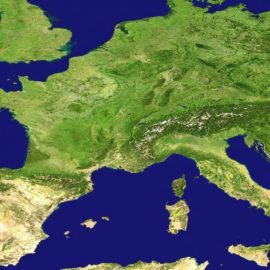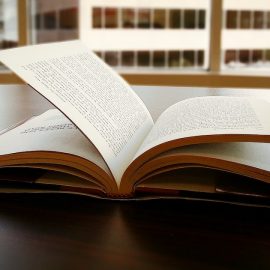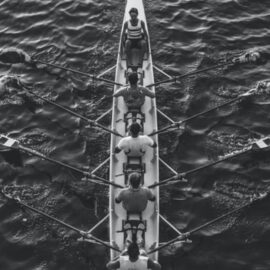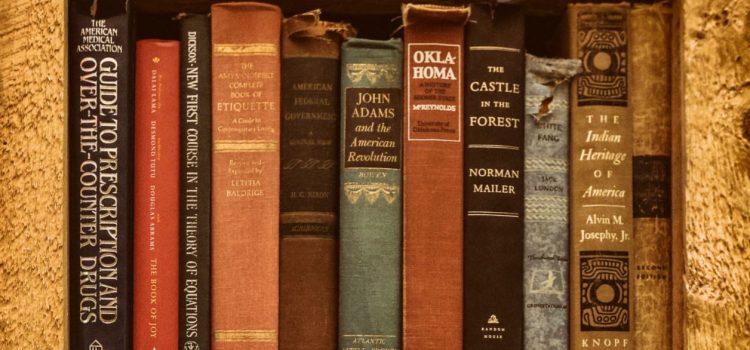
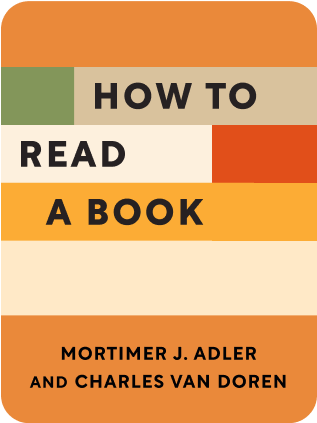
This article is an excerpt from the Shortform book guide to "How to Read a Book" by Mortimer J. Adler and Charles van Doren. Shortform has the world's best summaries and analyses of books you should be reading.
Like this article? Sign up for a free trial here .
Do you want to know how to read a book effectively? What are the best ways to read history, math, and science books? How do you go about reading books that are no longer accurate?
In How to Read a Book, co-authors Adler and Van Doren explain how to read history, math, and science books. They suggest reading these books and finding commonalities and links to one another rather than reading them in isolation. They also suggest being on the lookout for bias.
Continue reading to learn the best methods for reading history, math, and science effectively.
Reading History
In How to Read a Book, Adler and Van Doren discuss how to read a book effectively and analytically. According to the authors, history has a greater impact on people’s actions today than any other type of work. History shows the actions of people in the past, making it less imposing for you to repeat them (in the case of good achievements) or avoid their mistakes. The way to read history is not just to learn what happened, but also to discover the commonalities between people across time. This will help illuminate certain universal truths of human nature. For example, while readers of Anne Frank’s The Diary of a Young Girl may not be able to identify with her specific situation (hiding from the Nazis), they may empathize with Anne’s description of the loneliness of adolescence and feeling misunderstood.
Adler and Van Doren assert that accuracy is always an issue in historical works. It’s hard enough in a modern-day court to prove that anything happened, with live witnesses. Historical works try to establish that something happened in the past with no live witnesses to question. Historians must infer what happened from source material, and often have to impose patterns and infer motivations. (Shortform note: You may also find it useful to think about how reliable the source material is. For example, an author writing a biography of Abraham Lincoln will have access to ample primary sources (such as letters written in Lincoln’s own hand). On the other hand, an author writing a biography of Homer will have much more difficulty—he lived so long ago that there are almost no surviving primary sources about his life. As such, what information we have is all second-hand and therefore less reliable.)
Therefore, according to the authors, you should always be on the lookout for bias as you read history. Ask yourself: What is the author trying to prove, and to whom? Is she qualified to report on these particular events? You should also read multiple historical discussions of the same event. The more you read, the more the various authors’ biases will cancel each other out, and you’ll get a sense of the core issues on which they all agree.
The Four Questions
- What is the overall message or theme of the book?
- Know the limited scope of the work.
- How does the author’s argument unfold?
- Does the author describe events chronologically or by grouping them into themes?
- Is the author’s argument valid?
- Do you agree with the historian’s interpretation of her sources? Is she drawing the right conclusions based on the available evidence?
- What are the implications?
- How do the lessons of these past events apply to modern problems? What changes do they inspire you to make in your own life?
| How (and Why) Historians Get Things Wrong According to modern historians, Adler and Van Doren are right to urge caution when reading historical books, not only because of the bias historians can show, but also because historians can often get things completely wrong—sometimes directly because of this bias. For example, for centuries, historians constructed an image of the Vikings as an all-male fighting force, and, based on this bias, assumed that a skeleton of a Viking leader discovered in Sweden was male. However, in 2017, an osteologist analyzing the skeleton realized the warrior was actually female. According to philosopher Alex Rosenberg, alongside bias, another reason historians are so often wrong about history is that they force complex historical events into a cohesive narrative. We expect stories to make logical sense, so historians often ignore important evidence or draw connections that don’t exist in order to make their historical stories make sense. This isn’t deliberate deception—in fact, organizing random events into cohesive narratives is a universal subconscious tendency. In his landmark book, Thinking, Fast and Slow, psychologist Daniel Kahneman calls this “the narrative fallacy.” |
Types of Historical Works
Biographies
- The authors caution that the definitive biography is usually written after several other biographies have been written. For example, Ron Chernow’s definitive biography of Alexander Hamilton (which inspired the hit musical “Hamilton”) came after at least 14 other biographies.
- According to Adler and Van Doren, autobiographies and authorized biographies (where the subject (or her estate) gives exclusive right to private materials) should be assumed to be biased. The subjects have incentive to hide the negative and embellish the positive. (Shortform note: This is arguably true of all biographies, not just authorized ones; the biographer must have a strong interest in her subject in order to take on such a project and is therefore likely to skew the information to the positive.)
Current Events
- When reading current events, Adler and Van Doren advise asking yourself, “Who is the intended audience?” If the work is intended for a group that already agrees with the author, you may find it frustrating if you are outside the group. (Shortform note: Despite this frustration, it’s important to engage with works written by people with whom you disagree. If you only ever read things you already agree with, you risk entering an echo chamber and missing out on the chance to challenge (and potentially strengthen) your own beliefs.)
- Since these works primarily convey information, the authors feel you need not perform the full analysis. But you should continue asking the critical questions (including, “What facts have been left out?”). (Shortform note: In the “fake news” era, it may be more important than ever to read the news analytically. To start, you can check the political bias of your preferred news source.)
Reading Math and Science
According to the authors, historical math and science works tend to be more accessible than people think because 1) historically, they were written for broad readership, and 2) they tend to clarify upfront their terms and propositions. On the other hand, the authors argue that modern works tend to be written for an audience of experts, since fields have become deeply specialized. Thus they contain jargon and require prior training. The techniques in this book don’t apply as well in these cases. (Shortform note: This may no longer be true for modern math and science books. For example, Darrell Huff’s How to Lie With Statistics and Richard Dawkins’ The Selfish Gene are both easily accessible, even for readers who are new to those subjects.)
When reading math, Adler and Van Doren advise remembering that math is a language like any other, with its own conventions and grammar. It is in fact easier to understand than most languages, since it is not spoken and there are no emotional connotations. Treat it like this and it will become less inscrutable. (Shortform note: Many people are intimidated by math after struggling with it in school. According to Barbara Oakley, author of A Mind for Numbers, it’s entirely possible to teach yourself math concepts as an adult, even if the subject doesn’t come naturally to you.)
The Four Questions:
- What is the overall message or theme of the book?
- State as clearly as you can the problem the author has tried to solve.
- How does the author’s argument unfold?
- What experimental data are required to believe the arguments? They are likely outside the realm of your experience.
- What assumptions are required to form the propositions?
- Is the author’s argument valid?
- What are the implications?
- Theoretical conclusions can have important practical consequences (for example, on climate change).
| Reading Outdated Science Books Adler and Van Doren argue that one of the primary reasons to read scientific texts is to understand the history of science and the thought process that underlies the scientific method—not necessarily to understand the science in the book itself. This is particularly important because science is constantly evolving and some foundational works no longer represent scientific fact. For example, Ptolemy’s Almagest is one of the earliest classics of scientific literature. It describes a geocentric model of the solar system (in which the sun revolves around the Earth, rather than the Earth revolving around the sun) that was the dominant scientific understanding of the universe until the 16th century. From a modern perspective, we know that Ptolemy’s astronomy was wrong; however, reading the Almagest is still valuable because it gives us a glimpse into how historical humans made sense of the world around them. Thus, while reading older science books is a worthy endeavor, it’s important to ask additional questions, like “When was this written? Does this author’s conception of scientific fact still hold true?” |

———End of Preview———
Like what you just read? Read the rest of the world's best book summary and analysis of Mortimer J. Adler and Charles van Doren's "How to Read a Book" at Shortform .
Here's what you'll find in our full How to Read a Book summary :
- How to be a better critic of what you read
- Why you should read a novel differently from a nonfiction book
- How to understand the crux of a book in just 15 minutes


